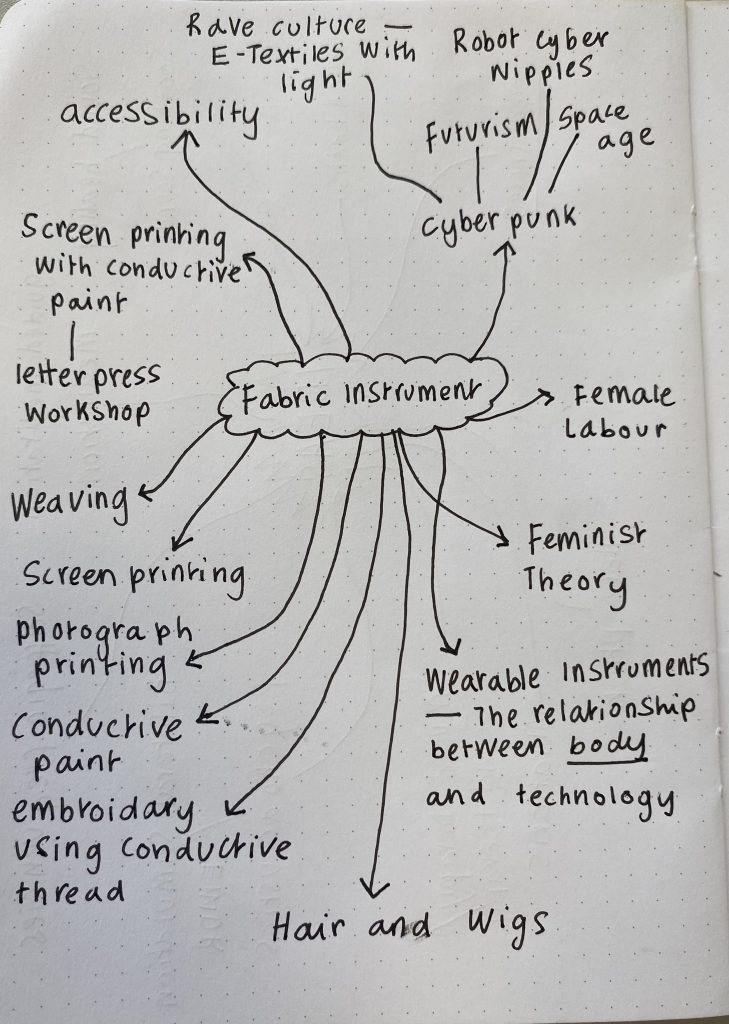Although it objectively is not, fabric as a material feels so silent to me giving me a desire to give it a sonic element. My home town Bradford historically had dozens of textile mills. I would like to use this practice to embrace my hometown pride and work with material connected to my identity. An aspect of fabric instruments that attracts me to the practice is that musical/sonic knowledge does not inform one to make “good” or “bad” noise when interacting with the circuit. When building instruments interactivity is important to me, I want everyone to be able to have a fulfilling experience with what I make.
“The term e-textile, or electronic textile, refers to a circuit that is either constructed into a textile or has been specially designed to be integrated into a textile.” (Loomia, page 2) Uses for E-Textiles include; health and medicine, the automotive industry, military, construction, sports, robotic engineering, art, and music.
There are two types of E-Textiles, “Embedded e-textiles use knitting or weaving to integrate the circuit into the fibres of the cloth. Laminated e-textiles involve manufacturing circuitry on a non-textile substrate and then sewing or bonding that to the textile.” (Loomia, page 7) I plan on experimenting with both types of E-textiles to be able to accurately consider the suitability of these techniques on a project-to-project basis.
Potential materials used in the realisation of E-textiles include; conductive thread, conductive fabric, conductive paint, conductive tape.

The picture above is my initial mind map of ideas for the project, this is to be expanded on and edited throughout the project.
References:
Everything you need to know about E-Textiles – Loomia (Ebook)(https://static1.squarespace.com/static/6328ce4d4e07a431eb701dc0/t/6508460eaf16274f9dc78dc5/1695041042147/Everything+You+Need+To+Know+About+E-Textiles+eBook+LOOMIA.pdf)